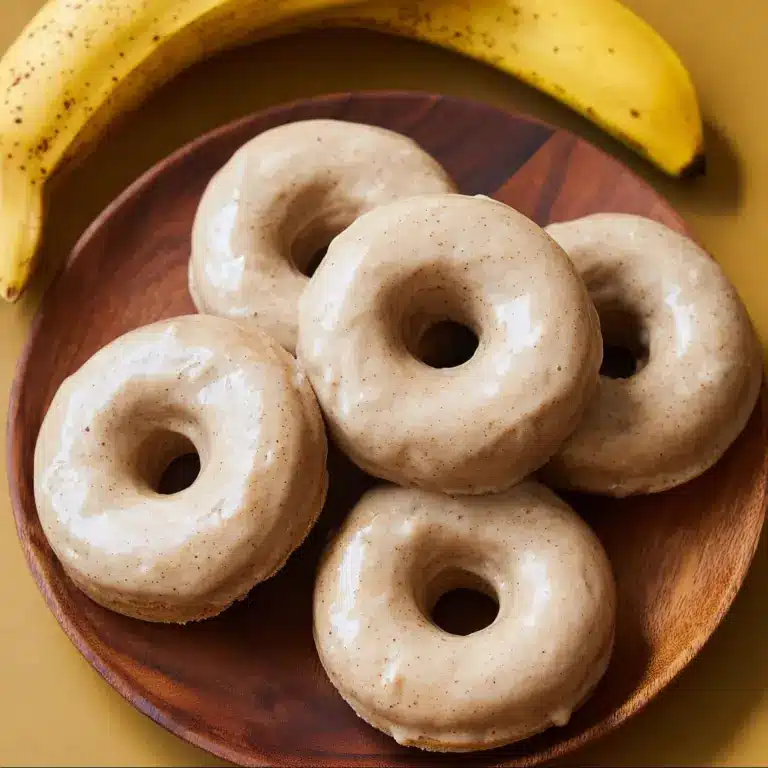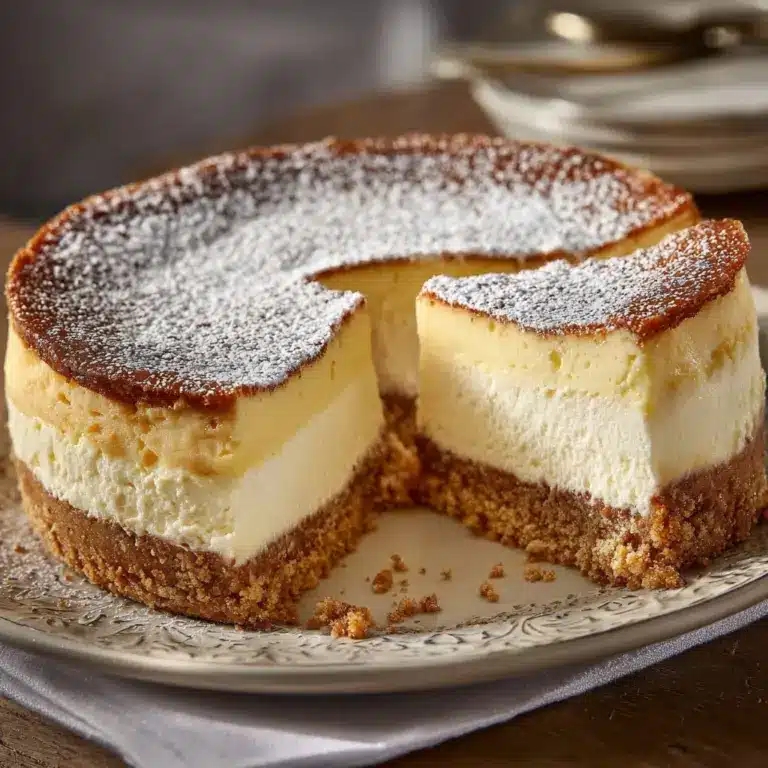Buttermilk Beignets Recipe
If you have a soft spot for warm, fluffy treats dusted in powdered sugar, you are in for a real delight with these Buttermilk Beignets. This recipe captures the essence of classic beignets and elevates them with the tangy richness of buttermilk, resulting in a perfect balance of lightness, sweetness, and a subtle hint of spice from nutmeg. Every bite is a pillowy cloud that melts in your mouth, making Buttermilk Beignets the ultimate comfort snack or breakfast indulgence you will want to make time and again.

Ingredients You’ll Need
These simple, everyday ingredients come together in a magical way to create the tender texture and distinctive flavor of Buttermilk Beignets. Each one plays an essential role, from leavening to seasoning, ensuring your beignets are irresistibly light and perfectly golden.
- All-purpose flour: The foundation for our beignets, providing structure and a tender crumb.
- Granulated sugar: Adds just enough sweetness to balance the tang from the buttermilk.
- Baking powder: Helps the beignets rise and become delightfully airy.
- Baking soda: Works with buttermilk to create lift and give a subtle crispness on the outside.
- Salt: Enhances the flavors and balances the sweetness perfectly.
- Ground nutmeg: Adds a warm, aromatic hint that complements the richness of the batter.
- Buttermilk: The star ingredient—gives tanginess, moisture, and tenderness to every beignet.
- Large eggs: Bind the ingredients and contribute to the rich, golden color.
- Vanilla extract: Brings a sweet, fragrant note to brighten the flavor profile.
- Unsalted butter, melted: Adds richness and a silky texture.
- Vegetable oil: For frying, chosen for its neutral flavor and high smoke point.
- Powdered sugar: The classic finish that transforms these lovely little pillows into an irresistible treat.
How to Make Buttermilk Beignets
Step 1: Mix the Dry Ingredients
Begin by whisking together all your dry ingredients—flour, sugar, baking powder, baking soda, salt, and nutmeg—in a large bowl. This ensures that your leavening agents and spices are evenly distributed, setting the stage for a uniform rise and delicious flavor throughout.
Step 2: Combine the Wet Ingredients
In a separate bowl, whisk your buttermilk, eggs, vanilla extract, and melted butter until smooth and fully blended. The buttermilk’s rich tang and the buttery goodness will infuse the batter with moistness and flavor.
Step 3: Bring It All Together
Pour the wet ingredients gently into the dry mix, folding them together with care. It’s crucial not to overmix here—you want everything just combined to keep the beignets light and tender rather than tough.
Step 4: Rest the Batter
Let the batter rest at room temperature for about 10 to 15 minutes. This brief pause hydrates the flour and helps the leavening agents activate fully, promising a more puffed and airy final product.
Step 5: Heat the Oil for Frying
While your batter rests, heat vegetable oil in a deep pot until it reaches 350°F (175°C). Maintaining this temperature ensures your beignets fry quickly and evenly to a beautiful golden brown without absorbing too much oil.
Step 6: Fry the Buttermilk Beignets
Drop spoonfuls of batter carefully into the hot oil—do not overcrowd the pot. Fry them for 2 to 3 minutes on each side until they are puffed to perfection and golden brown all over. Use a slotted spoon to remove the beignets and place them on paper towels to drain excess oil.
Step 7: Dust and Serve
While still warm, generously dust the Buttermilk Beignets with powdered sugar. This final touch adds sweetness and a snowy look that begs you to take the very first bite right away!
How to Serve Buttermilk Beignets

Garnishes
Powdered sugar is the classic choice that captures the spirit of Buttermilk Beignets perfectly, but you can get creative too. Try a light drizzle of honey, a sprinkle of cinnamon sugar, or even a dusting of cocoa powder for an extra hint of flavor and charm.
Side Dishes
Serve your beignets alongside fresh fruit compotes, a warm cup of café au lait, or rich chocolate sauce for dipping. These pairings elevate the experience and complement the tender, sweet nature of the beignets beautifully.
Creative Ways to Present
For a fun twist, stack a few beignets on a pretty plate and garnish with edible flowers or fresh mint leaves. You could even sandwich a little whipped cream or fruit jam between two beignets for a playful dessert sandwich that will wow your guests!
Make Ahead and Storage
Storing Leftovers
If, by any chance, you have leftovers (though these delicious Buttermilk Beignets rarely last long), store them in an airtight container for up to two days. Keep them at room temperature to preserve their softness and flavor.
Freezing
For longer storage, freeze the beignets in a single layer on a baking sheet first, then transfer them to a freezer-safe bag or container. This method stops them from sticking together and lets you enjoy fresh-tasting beignets whenever the craving hits.
Reheating
Reheat stored or frozen beignets in a toaster oven or conventional oven at low heat just until warmed through. This helps restore their crisp exterior and soft, fluffy interior—microwaving tends to make them soggy, so avoid that if possible.
FAQs
Can I substitute regular milk for buttermilk in Buttermilk Beignets?
You can use regular milk with a splash of vinegar or lemon juice to mimic buttermilk’s acidity, but the tangy flavor and tender crumb unique to Buttermilk Beignets might be slightly less pronounced.
What oil is best for frying these beignets?
Vegetable oil is a great choice due to its neutral flavor and high smoke point. You can also use canola or peanut oil for equally excellent results.
How do I know when the oil is hot enough?
Use a thermometer to ensure the oil reaches 350°F (175°C). If you don’t have one, drop a tiny bit of batter in the oil—if it sizzles and rises to the surface quickly, the oil is ready.
Can I add flavors or fillings to the beignets?
Absolutely! Try folding in a pinch of cinnamon or citrus zest for a twist, or after frying, stuff the beignets with jam, Nutella, or cream cheese for an exciting surprise inside.
Why shouldn’t I overmix the batter?
Overmixing develops the gluten in the flour too much, leading to dense and tough beignets rather than the soft, airy texture that makes Buttermilk Beignets so special.
Final Thoughts
There is nothing quite like the joy of making your own Buttermilk Beignets—crispy on the outside, pillowy inside, and dusted with clouds of sweet powdered sugar. Whether it’s a festive occasion or just a cozy weekend morning, these treats are guaranteed to bring warmth and smiles. So why not gather your ingredients and dive into this delightful recipe? Your kitchen and your taste buds will thank you!
Print
Buttermilk Beignets Recipe
- Total Time: 30 minutes
- Yield: Approximately 12–15 beignets 1x
- Diet: Vegetarian
Description
Buttermilk Beignets are light, fluffy, and perfectly golden French-style fritters with a hint of nutmeg, fried to perfection and dusted generously with powdered sugar. This easy-to-make recipe uses simple ingredients and results in delicious pastries that are perfect for breakfast, dessert, or a delightful snack.
Ingredients
Dry Ingredients
- 2 cups all-purpose flour
- ½ cup granulated sugar
- 1 tablespoon baking powder
- ½ teaspoon baking soda
- ½ teaspoon salt
- ½ teaspoon ground nutmeg
Wet Ingredients
- ½ cup buttermilk
- 2 large eggs
- 1 teaspoon vanilla extract
- ¼ cup unsalted butter, melted
For Frying and Finishing
- Vegetable oil, for frying
- Powdered sugar, for dusting
Instructions
- Mix Dry Ingredients: In a large bowl, whisk together the all-purpose flour, granulated sugar, baking powder, baking soda, salt, and ground nutmeg until well combined.
- Mix Wet Ingredients: In a separate medium bowl, whisk together the buttermilk, eggs, vanilla extract, and melted unsalted butter until smooth and fully incorporated.
- Combine Wet and Dry: Pour the wet ingredients into the dry ingredients and gently fold them together just until combined. Be careful not to overmix, as this can make the beignets tough.
- Rest the Batter: Allow the batter to rest at room temperature for 10 to 15 minutes. This helps the ingredients meld and gives the beignets a lighter texture.
- Heat Oil: In a deep pot or fryer, heat vegetable oil to 350°F (175°C). Use a thermometer to ensure the temperature is accurate for frying.
- Fry the Beignets: Using a spoon, drop spoonfuls of batter carefully into the hot oil. Fry them for approximately 2 to 3 minutes on each side, or until they turn golden brown and puff up.
- Drain Excess Oil: Remove the fried beignets with a slotted spoon and place them on paper towels to drain the extra oil.
- Repeat Frying: Continue frying the remaining batter in batches, making sure to maintain the oil temperature between batches by adjusting the heat as needed.
- Dust with Powdered Sugar: While still warm, generously dust the beignets with powdered sugar for that classic sweet finish.
- Serve: Serve the beignets immediately for the best taste and texture. Enjoy them fresh and warm.
- Store Leftovers: Store any leftover beignets in an airtight container for up to 2 days. Reheat gently in a toaster oven to restore crispness before serving again.
Notes
- Do not overmix the batter to keep the beignets light and fluffy.
- Maintain the oil temperature at 350°F (175°C) for even cooking and a golden crust.
- If you don’t have buttermilk, you can make a substitute by adding 1 tablespoon of lemon juice or vinegar to ½ cup milk and letting it sit for 5 minutes.
- Use a thermometer when frying for safety and best results.
- Eat beignets fresh for the best texture; they tend to lose their crispness when cooled.
- Powdered sugar can be adjusted according to taste.
- Prep Time: 15 minutes
- Cook Time: 15 minutes
- Category: Dessert, Snack
- Method: Frying
- Cuisine: French, Creole
Nutrition
- Serving Size: 3 beignets (about 90g)
- Calories: 290 kcal
- Sugar: 10 g
- Sodium: 210 mg
- Fat: 14 g
- Saturated Fat: 6 g
- Unsaturated Fat: 7 g
- Trans Fat: 0 g
- Carbohydrates: 35 g
- Fiber: 1 g
- Protein: 5 g
- Cholesterol: 70 mg
Keywords: buttermilk beignets, fried dough, french pastries, creole dessert, powdered sugar beignets







